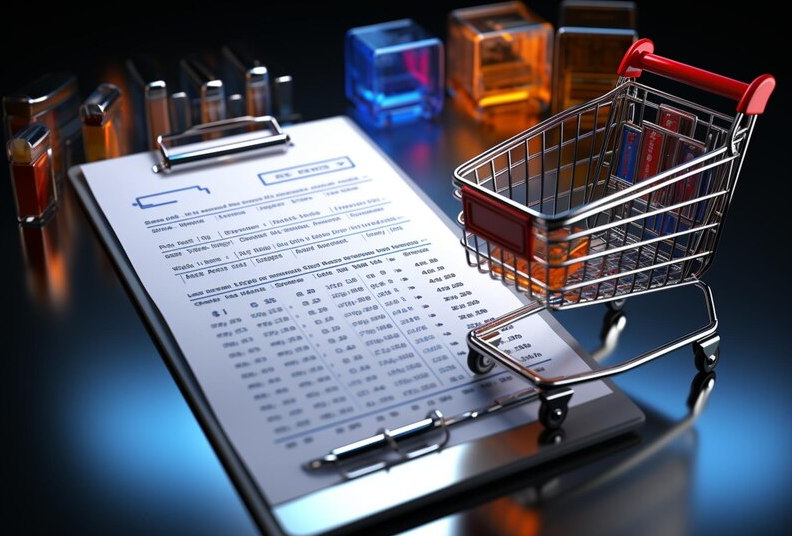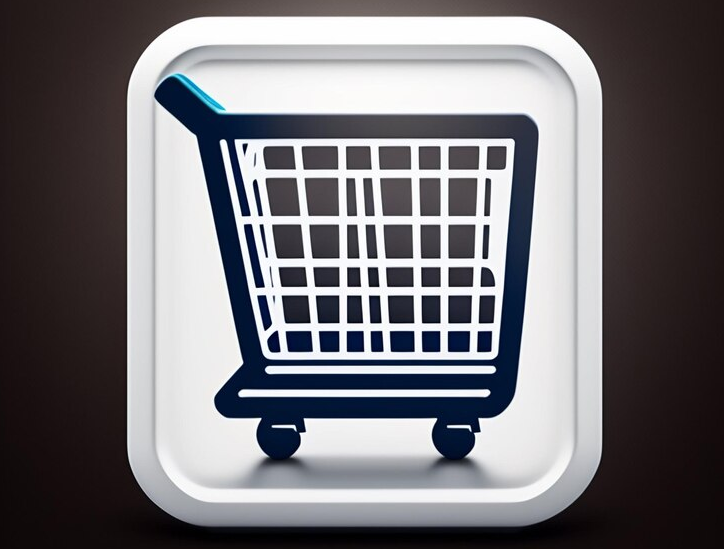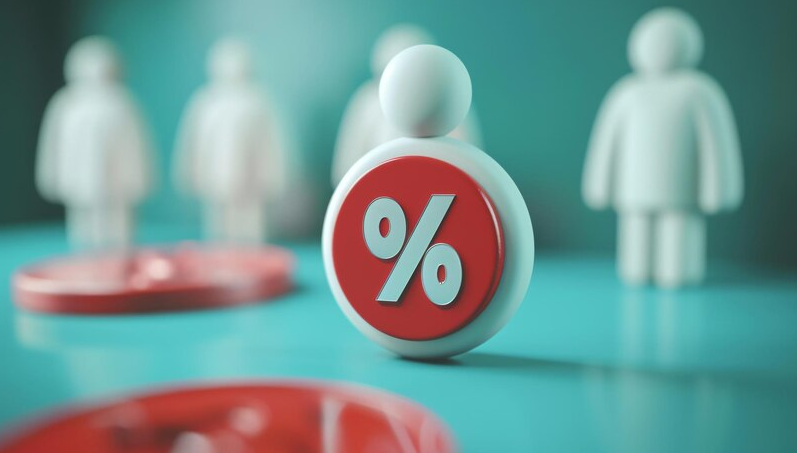Key business metrics for an online store: A step-by-step guide to success
-
Leonid Vlasov
Copywriter Elbuz
Everything changes. Today your online store is experiencing a decline in sales, and tomorrow you will become a market leader. Why is that? It's all about...

Glossary
- 📈 Total Visits / Total Visitors - Total number visits / Total unique visitors; a metric that allows you to determine the total traffic to a site.
- 📉 BR (Bounce Rate) — Bounce rate; the percentage of visitors who leave the site after viewing one page.
- 📊 CPC (Cost Per Click) - Cost per click; The amount an advertiser pays for each click on their ad.
- 📍 CTR (Click Through Rate) — Ad click-through rate; The ratio of clicks on an ad to the number of impressions.
- 🎯 CPA (Cost Per Action) — Price of the target action; the cost that a company incurs for each useful action (for example, purchase, registration).
- 💵 CRR (Cost Revenue Ratio), DRR (Share of advertising expenses) - The percentage of income spent on advertising, important for assessing the effectiveness of advertising campaigns.
- 📊 LTV (Lifetime Value) - Customer lifetime value; the total projected income that the company expects to receive from the client over the entire period of cooperation.
- 🛒 Conversion - An indicator that reflects the percentage of visitors who made a purchase or other targeted action.
- 💼 Average bill - Average purchase amount; an indicator that helps assess the profitability and scale of sales.
- 🛍️ “Abandoned carts” parameter — The percentage of users who added items to the cart but did not complete the purchase.
- 🤝 CAC (Customer Acquisition Cost) - Cost of attracting a consumer; the total cost of attracting one new client.
- 🔄 Retention Rate - Customer retention rate; the percentage of customers who continue to make purchases over a period of time.
- 🌐 Traffic source research - Analyze where visitors are coming to your site from, be it search engines, social networks or other channels.
- 👥 User behavior assessment - Collect data on user interactions with the site to optimize user experience and increase conversion.
- 📄 Collect information about important web pages - Analyze key pages (for example, product pages, contact information, etc.) .d.) to identify their effectiveness.
- 📈 Building a competent development strategy - Creating an optimal strategy based on data obtained from metrics in order to increase income and improving user experience.
Accurate cost accounting when calculating profits
I have always emphasized the importance of accurately accounting for all costs for an online store. If you want to truly see the profitability of your business, you need to track every expense item, no matter how small. This allows you to not only clearly understand the financial picture, but also make more informed decisions.

Get a complete picture of your expenses
When I started my business, I was faced with the fact that costs include not only the cost of purchasing goods. Here are the main groups of expenses that you need to consider:
🖥️ Office maintenance costs
- Rent
- Electricity
- Paper supplies, cartridges and much more
👨💼 Payments to employees
- Order pickers
- Packers
- Managers
📦 Costs of purchasing goods
- Quality and The quantity of goods purchased directly affects the final profit.
📊 Tax deductions
- Assessment of tax payments and their impact on the financial model.
🚚 Transportation costs
- Including the costs of delivering goods to the customer.
📣 Advertising and promotion costs
- Don't underestimate the cost of marketing efforts.
🔄 Loss due to product returns
- I came to the conclusion that you need to take into account in detail exactly how much you lose for each returned order.
⏱️ Losses in case of delay
- Especially relevant when selling products with a limited expiration date.

- Especially relevant when selling products with a limited expiration date.
Examples from Experience
When I started to take into account all these cost items, my actions gave me a clearer understanding of the real profit of my business. In one case, after analyzing the costs of advertising campaigns, I noticed that the effectiveness of one of the platforms was extremely poor and decided to change the strategy, which resulted in a 15% increase in return on investment.
When analyzing costs, I came to realize that the key to successfully running an online store lies in the details. It was accurate and complete cost accounting that allowed me to improve the financial stability of the business.
Useful tips
I recommend:
- 📊 Keep detailed records of all expenses.
- 🛠️ Use specialized tools for accounting automation, such as YNAB or QuickBooks, ELBUZ
- 💹 Regularly analyze data and adjust strategy if necessary.
Note that without taking into account the full spectrum of costs, it is impossible to consider the truth about the profitability of your business and correctly assess its financial stability.
| Helpful Steps | Actions to avoid |
|---|---|
| Maintain detailed accounting for all expenses | Neglecting small expenses |
| Regularly update accounting system data | Do not take into account the costs of returns and losses |
| Adapt strategy based on analysis | Ignore constant changes in costs |
Studying and accounting for even the smallest expenses is an important step towards successfully running an online store. I hope my advice and personal experience will help you optimize costs and increase the profits of your business.
Online store performance monitoring
Cumulative number of visits and visitors
When I started managing an online store, the first thing I paid attention to was the total number of visits and direct visitors to the web resource. This basic but extremely important parameter helps to understand how popular our site is and attracts users. When I noticed that our visits had dropped over several months, I decided to conduct an audit of my marketing channels.

📊 By comparing data from Google Analytics, I found that our SEO strategy has lost its effectiveness. I decided to rework and update the content on the site, paying special attention to keywords and product descriptions. As a result, after just a couple of months, visibility in search engines improved, leading to an increase in the number of visitors by almost 30%.
The total number of visits allows us to judge the general interest of the audience in our resource.
Please note the following checklist:
- 🚀 Regularly analyze the source of traffic
- 🔍 Optimize content for SEO
- 📈 Conduct monthly reports on visits
Useful:
- Analyze traffic sources
- Content optimization
Not necessary:
- Ignore drop in traffic
- Wait for magical growth without action
Bounce rate (BR)
At one of the stages of developing an online store, I was faced with a high bounce rate. This meant that many users were visiting our site but not taking any action. I began to look for the reasons for this phenomenon.
🔍 It turned out that our main page was excessively cluttered with pop-up windows and advertising. I decided to change the design of the site, making it cleaner and more intuitive. Also added quick links to popular categories and improved navigation. After a few weeks, the bounce rate dropped by 15% and the average time on site increased significantly.

A high bounce rate may indicate poor navigation or irrelevant content.
CPC - cost per click
Cost per click (CPC) is the most important indicator for evaluation the effectiveness of advertising campaigns for my online store. Constant monitoring of CPC allowed us to optimally distribute the advertising budget.
📈 I have personally tested several advertising platforms and set up different ad options. After analyzing the results, I significantly reduced spending on low-profit campaigns. As a result, our advertising costs decreased by 20%, and the number of attracted clients increased.
CTR - ad click-through rate
CTR, or the ratio of clicks to ad impressions, is another key metric. At one time, our CTR was extremely low, which worried me a lot. I overhauled our advertising copy and visual content.
✍️ After making changes, namely creating more catchy headlines and attractive images, our CTR increased by 10%. This significant improvement led to increased sales.
CPA - price of target action
In my online store, CPA (price of target action) has become one of the main performance indicators . We have introduced various forms of targeted actions, such as registration and subscription to email newsletters.
I believe that for any advertising campaign, the key to success is CPA monitoring. For example, with one of the promotions aimed at collecting contact information, we achieved a CPA of 30% below average, which allowed us to significantly save our budget.
RRR - share of advertising expenses
The ratio of advertising expenses to total profit helps to assess the return on advertising investments. At some point, we noticed that the increased RRR did not bring the expected profit.

📊 By reviewing our strategy, we focused on more relevant audiences and optimized our advertising campaigns. The final result was a 12% reduction in operating expenses, without loss of revenue, which significantly increased our profitability.
Checklist, recommendations
- 🚀 Analyze sources traffic and follow trends.
- 📈 Optimize content to improve SEO performance.
- 🔍 Monitor bounce rates and make timely changes to the site design.
- 💰 Monitor CPC and redirect budget to more profitable advertising campaigns.
- 📊 Revise advertisements to improve CTR.
- 🎯 Evaluate CPA by implementing various targeted actions to improve performance.
- 📉 Conduct regular audits of DRR to optimize advertising costs and increase profitability.
By applying these recommendations, you can improve the performance of your online store and significantly increase your profits.
Long-term business metrics
Average bill
Determining the average check has become for me one of the most important indicators of the success of my online store. Average bill shows how much money each customer spends on one purchase, and this helps me build long-term forecasts. To calculate the average check, I needed to divide the total amount of purchases by the number of orders.

🛒 Examples of tactics for increasing the average check:
- 🛍 Cross-sell: When a customer added a product to the cart, I suggested related products. For example, when buying a phone, I offered cases and protective glass.
- 💎 Up-sells: Motivated customers to buy more expensive versions of products by offering improved features or attractive designs .
- 🚚 Free Shipping: Set a purchase threshold at which shipping becomes free. This encouraged customers to add more items to their cart.
- 🔖 Discount programs: Introduced discount systems to motivate customers to buy more, for example, gave a discount for the second purchase in within a month.
Conversion
Conversion plays a key role in measuring the performance of an online store. This indicator shows how many users out of all visitors made a purchase.
🔍 Factors influencing conversion:
- 💻 Devices and channels: Analyzed which devices and channels customers come from. This helped me optimize the customer experience across different devices.
- 🌐 Traffic Source: Discovered which channels are bringing in the most converting users.
- 📊 Segmentation: Segmented users by product categories and frequency of purchases.
Regularly conducting A/B testing and improving the website interface has significantly increased my conversion rates.
CAC - Cost of Acquisition
Customer Acquisition Cost (CAC) has become an important key to understanding the effectiveness of my marketing spend. CAC includes all costs of attracting new customers through any channels. Here's how I implemented it:
💸 Optimization examples:
- 🎯 Redistributed the budget between channels that brought more customers at a lower cost.
- 🧩 Included content marketing and SEO to attract customers organically.
- 📊 Used analytics to track the effectiveness of advertising campaigns.
Understanding how much money I spend on acquiring each client has helped me plan advertising budgets better and run more profitable campaigns.

Abandoned carts parameter
Cart abandonment is a metric that shows how many visitors did not complete their purchases. In my experience, about 70% of carts were abandoned.
⚙️ Methods for reducing abandoned carts:
- 📧 Email reminders: Regular reminder emails about abandoned items helped bring back some customers.
- ➕ Related Products: On the cart pages, I started showing products that might be of interest to customers.
- 👤 Easier checkout: Reduced the number of steps for registration and checkout to simplify the shopping process.
These methods have allowed me to reduce my cart abandonment rate and increase my overall purchase completion rate.
LTV indicator
The LTV (Lifetime Value) indicator gives an understanding of how much money I can expect from one client over time his interaction with the store. Understanding this has helped me better allocate my marketing budgets.
🔑 Ways to increase LTV:
- 🛒 Regular purchases: Encouraged customers to return regularly for purchases through loyalty programs.
- 💼 Constant communication: Established long-term and honest relationships with clients through email marketing and personal offers.
- 🎁 Loyalty programs: Implemented loyalty programs that motivated customers to make purchases more often.
Retention Rate
Retention Rate shows the percentage of customers who return for repeat purchases. I have found that retaining a customer is less expensive than acquiring a new one.

💡 Methods to increase retention rate:
- 🌟 Quality Service: Provided a high level of service to everyone stages of interaction.
- 📣 Brand Popularization: Regular investments in brand awareness through social networks and advertising campaigns.
- 🎉 Loyalty programs: Introduction of bonuses and discounts for regular customers.
- 📝 Systematic communication: Constant communication through email and social networks helped me keep clients up to date with news and offers.
Quality service is the key to returning customers
Final table of recommendations:
| Actions | Useful | Not recommended | Best practices |
|---|---|---|---|
| Average check | Cross-sell, up-sell, discounts, | More complex processes | Free shipping |
| Conversion | A/B testing, segmentation | Neglecting A/B tests | Interface optimization |
| Cost of customer acquisition (CAC) | Channel optimization, content | Neglect of analytics | Directing budget to effective channels |
| Abandoned carts parameter | Reminders, simplification of checkout | Ignoring the reason for leaving | Related products |
| LTV | Loyalty programs, customer contact | Ignoring Customer Value | Personalized Offers |
| Retention rate | Quality service, brand promotion | Neglect of loyalty | System interaction |
Following these recommendations, you will be able to effectively manage the key business metrics of your online store and significantly improve its performance.
Optimizing the user experience to increase conversions
When I started his career in the field of online stores, one of the first tasks was to optimize user interaction with the site. This task seemed incredibly difficult at the time, but for the convenience of users it is important to find out which site functions are truly useful. And only by collecting the appropriate metrics can you determine what exactly on the site requires improvement. In this section I will share my experience, how I did it and what methods I used to increase efficiency.

Traffic source analysis
My work began with understanding where users come to the site from. Using Google Analytics, I tracked the number of visitors and their paths. Why is this so important? Because knowing your traffic sources helps you optimize your advertising campaigns, choose the right advertising platforms, and formulate more effective promotion strategies. For example, I once noticed that most of my visitors were coming from social networks, which prompted me to increase my advertising budget on these channels.
To effectively analyze traffic sources, I would recommend:
- 🌐 Divide visitors into segments: Direct traffic, organic search, social networks, paid campaigns.
- 📊 Track conversions: Which segment generates the most sales?
- 🔄 Adjust strategies: Increase investments in those channels that bring the greatest return.
Understanding your traffic sources is the first step to creating a successful promotion strategy.
Studying user behavior
Next I started studying user behavior on the site using tools such as Google Analytics. The Google Analytics web viewer was particularly useful. It allows you to monitor the actions of each visitor on the site: clicks, cursor movements, time spent and much more. I once found out that many users left a certain page without making a purchase. After reviewing the session notes, I realized that there were too many distracting elements on that page. By removing unnecessary elements and optimizing the content, I was able to significantly reduce my bounce rate.
To study user behavior, I would recommend:
- 👁️🗨️ Use Webvisor and similar tools: It shows which elements attract users' attention.
- 📈 Pay attention to pages with high bounce rates: What can be improved on these pages?
- 🛠️ Check user journey: What steps does he take before purchasing?

Collecting data about the most important pages of the site
An equally important step in my practice was the analysis of the key pages of the site: home pages, product pages, shopping cart and others. This helped me understand which pages were visited most often and how much time users spent there. For example, when analyzing cart page data, I found that many users left the site without completing their purchase. An in-depth analysis revealed that the problem was the complexity of the ordering process. After making the changes, conversion rates increased significantly.
My recommendations for analyzing key pages:
- 🔍 Track most visited pages: Focus on home pages, product cards and cart.
- 🕒 Study dwell time: How long do users stay on these pages?
- 🔧 Test changes: Make changes and see how they affect user behavior.
Optimizing key website pages is the key to successful sales and increased customer satisfaction.
| Useful actions | Useless actions |
|---|---|
| Use analytics to understand traffic sources | Ignore user behavior data |
| Implement changes and test their effectiveness | Leave the site unchanged |
| Monitor key page metrics | Rely on intuition and subjective opinions |
I truly believe that implementing these strategies will help you improve user satisfaction and increase sales in your online store.
Cost optimization and profitability control through metrics
When I was launching my first online store, the first thing I thought about was budgeting and expense planning. Of course, understanding the exact amount of costs is the key to the success of any business. Here's how I did it in practice.

One day we decided to launch an advertising campaign to promote a new range of products. To avoid wasting money, I carefully studied the statistics of past campaigns. I analyzed how much money it took to achieve the desired result and which platforms had the highest conversion.
🤔 What I did:
- 📊 Researched previous campaigns: Found that platforms X and Y had better conversion rates than others.
- 💵 Determined the budget: Calculated how much money would be needed to launch a new campaign on these platforms.
The trap is that one day I made a mistake and invested all my money in an ineffective platform. This was a lesson for me. Now I not only do detailed research and data analysis, but also use forecasting to identify future influences.
📊 Example: Once an analysis showed that advertising on platform Z did not bring the desired results, so I decided to reduce costs on this platform and reallocate the budget to proven options. This reduced costs and increased profitability.
🤔 Performance metrics recommendations:
- Take a detailed look at the statistics: Constantly analyze data from past campaigns.
- Identify profitable platforms: Invest in those platforms that deliver the results you expect them to deliver.
- Make forecasts: Predict future expenses and potential profits based on real-world analytics.

Balance between income and expenses is the basis successful online store. It is important to use metrics that will help not only understand current performance, but also predict future development. This is how I was able to optimize the operation of my online store and increase its profitability.
I am convinced that smart use of data helps you make the right decisions and avoid pointless spending. I recommend paying close attention to the metrics and analyzing every detail.
| Useful to do | Shouldn't |
|---|---|
| Study and analyze previous data 📊 | Ignore data and do things at random 🔄 |
| Determine the budget based on analytics 💵 | Distribute the budget without taking into account efficiency 💸 |
| Forecast future costs and profits 📈 | Neglect forecasts and act impulsively 🚫 |
I am confident that by implementing these principles, you can significantly increase the efficiency of your online business, reduce costs and increase income.
Checklist: Key metrics for online store efficiency
First of all, I want to emphasize the importance of the correct selection and analysis of business metrics for an online store. I can tell you from personal experience that accurately identifying and interpreting data drives business growth and efficiency. Let's discuss a few key metrics you should be tracking.

Metric #1📊 Conversion (CR)
Conversion is one of the most informative metrics that shows the percentage of visitors who made a purchase. For example, the online store where I worked had a conversion rate of less than 1% at first. After changing the site design and improving the shopping cart, the conversion increased to 3%. I recommend using Google Analytics to track CR.
- Practical application example:
- Improving the UX/UI of the site
- Optimizing page loading
- Tools:
- Google Analytics
- Hotjar
Metric #2📥 Average check (AOV )
Average check (AOV) allows you to estimate how much one customer spends on average. I always advise my clients to increase AOV by offering customers additional products or services. One of the projects showed an increase in the average bill by 20% due to the introduction of recommendation algorithms.
- Practical application example:
- Recommendation system
- Cross-selling and upselling
- Tools:
- Yotpo
- Salesforce
Metric #3🛒 Cart abandonment rate
Cart abandonment rates often indicate UX or payment issues. In one of my projects, this metric exceeded 70%, which required immediate action. After optimizing the payment process and introducing email reminders, the figure dropped to 50%.

- Example practical applications:
- Optimizing the checkout process
- Email reminders
- Tools:
- Mailchimp
- Klaviyo
Metric No. 4💼 Return on advertising (ROAS)
Return on advertising (ROAS) shows how much profit does each currency spent on advertising generate? At one of my clients, we implemented targeting and achieved an ROAS of 800%, which significantly increased overall revenue.
- Example of practical application:
- Advertising targeting
- Campaign performance analysis
- Tools:
- Facebook Ads Manager
- Google Ads
Metric #5💬 Customer Retention (CRR)
Customer retention is a critical metric for long-term success. I always advise my clients to implement loyalty programs that encourage repeat purchases. In one of the projects, we increased customer retention by 30% thanks to the development and implementation of a loyalty program.
- Example of practical application:
- Loyalty program
- Personalized marketing
- Tools:
- LoyaltyLion
- Smile.io
Metric No. 6💸 Customer acquisition cost (CAC)
Customer acquisition cost is a critical metric that shows how much you spend to attract one new customer. In one project, we were able to reduce CAC by 25% due to improved content and SEO strategy.

- Example practical application:
- Content optimization
- SEO strategy
- Tools:
- Ahrefs
- SEMrush
Metric #7📦 Order processing time
Order processing time has a significant impact on customer satisfaction. In one of my projects, logistics optimization reduced processing time by 40%, which significantly improved the customer experience.
- Example of practical application:
- Automation of logistics
- Improvement of the warehouse system
- Tools:
- ShipStation
- TradeGecko
Metric #8📈 Traffic by channels
Analyzing traffic by channel helps you understand where customers are coming from. I always use this information to optimize my advertising strategy. In one project, we discovered that organic traffic brought the greatest ROI, and we strengthened the SEO.
- Example of practical application:
- Traffic analysis
- Optimization of acquisition channels
- Tools:
- Google Analytics
- Ahrefs
Metric #8📣 Bounce Rate
Bounce rate shows the percentage of visitors who leave the site without viewing other pages. In one of the projects, by reducing the loading speed, we managed to reduce this figure by 15%.

- Example practical applications:
- Improving loading speed
- Content optimization
- Tools:
- Google PageSpeed Insights
- GTmetrix
Metric #10🔄 Customer lifetime value (LTV)
Customer lifetime value allows you to estimate the total profit, which the client brings during the entire time of interaction with the store. In one project, we saw a 25% increase in LTV due to an improved customer return program and personalized offers.
- Example of practical application:
- Personalized Offers
- Customer Return Program
- Tools:
- HubSpot
- Customer.io
To sum it up, key metrics are the foundation of successful online store management. In addition to those mentioned above, there are many others, each of which requires careful analysis.
| Metric | Helpful Ways | Avoid |
|---|---|---|
| Conversion | UX improvement, optimization | Complex interfaces |
| Average bill | Cross-selling, recommendations | Ignore data |
| % of abandoned carts | Reminders, UX improvement | Neglecting analysis |
| ROAS | Targeting, campaign analysis | Ignoring ROI |
| Customer Retention | Loyalty Programs | One-way Marketing |
These metrics will help you get the most out of your business and create a successful strategy.

Expertise Decathlon
Detailed description of the client
Decathlon - international a chain of sporting goods stores known for its affordable prices and wide range of products. The company has offices in more than 50 countries and serves millions of customers. The Decathlon online store provides a huge selection of equipment and accessories for a variety of sports, from running to water sports.

Goals and objectives
Decathlon's main goal is to increase the efficiency of the online store and improve promotion strategies. The company aims to increase revenue, expand audience and increase conversion rate. The main goal is to create a more intuitive and convenient interface for customers, focus on customer retention and optimize advertising costs.
Problem formulation
The company faced problems with high customer acquisition cost (CAC) and with a low conversion rate of. Difficulties were also identified with improving the Retention Rate and managing the dynamics of abandoned carts.
Characteristics of the target audience
Target audience Decathlon varies from amateurs to professional athletes of all ages. Customers appreciate the convenience of online shopping, a wide range of products and affordable prices. The audience's interests include an active lifestyle, sports and staying fit.

Strategy development
Key points that can attract potential customers:
Wide range of products - from budget to premium.
Promotions and special offers that make the purchase more attractive.
High level of service and support for real reviews from customers.
Specific results of the project
Decathlon began tracking key business -metrics using analytics tools:
- Total Visits/Total Visitors: 25% increase for the first quarter of 2024.
- BR (Bounce Rate): Reduce bounce rate by 15%.
- CPC (cost per click): reducing the cost per click by optimizing advertising campaigns.
- CTR (ad click-through rate parameter): increase in click-through rate by 10%.
- CPA (cost of targeted action): reduced to $5 per targeted action.
- ARR (share of advertising expenses): stabilized at 20%.
- Average check: increase by $15.
- Conversion: increase to 3%.
- CAC (customer acquisition cost): reduction by 20%.
- LTV (Customer Lifetime Value): Increased to $80 by improving Retention Rate by 30%.
Summary
Decathlon successfully improved the functionality of the online store and optimized advertising costs. Formulating and implementing a clear metrics strategy enabled the company to achieve impressive results and ensure sustainable business growth. These examples may be useful for other companies looking to improve their online sales effectiveness.
“Technical metrics have helped us understand our customers' behavior much better and optimize our sales strategies,” comments Neil Logan, Decathlon spokesman.
Frequently asked questions on the topic: Key business metrics for an online store: A step-by-step guide to success
What are the main business metrics of the Internet -Does the store need to be tracked?
What are Total Visits and Total Visitors?
What does the bounce parameter (BR) mean?
What is CPC and how to measure it?
What is CTR and why is it important?
What does CPA mean?
Why is it important to track DRR?
How to measure the average check?
What is conversion rate?
What metrics reflect customer loyalty?
Thanks for reading! 🤓
So now you are a master at diagnosing your online business. You've received the tools that will help your online store not just survive, but thrive. Now that each of you knows how to estimate conversion , increase average check and understand your clients, all doors to success are open to you. 🏆
Leave your comments below, it’s very important for me to know your opinion!
Leonid Vlasov – independent expert at "Elbuz"

- Glossary
- Accurate cost accounting when calculating profits
- Online store performance monitoring
- Long-term business metrics
- Cost optimization and profitability control through metrics
- Checklist: Key metrics for online store efficiency
- Expertise Decathlon
- Frequently asked questions on the topic: Key business metrics for an online store: A step-by-step guide to success
- Thanks for reading!
Article Target
Raise awareness among online store owners about the importance of business metrics and help them apply them to improve their business.
Target audience
Owners of online stores, marketing managers, businessmen
Hashtags
Save a link to this article
Leonid Vlasov
Copywriter ElbuzMy texts are a kaleidoscope of successful automation in the Internet space. Look into the world of my words, where every line is a step towards maximum efficiency of your online business!
Discussion of the topic – Key business metrics for an online store: A step-by-step guide to success
Informing about the key business metrics that an online store should track to increase efficiency and improve strategies. Real examples, practical tips and measurement tools.
Latest comments
15 comments
Write a comment
Your email address will not be published. Required fields are checked *

























Emily
Great article! I especially liked the part about ROI. I have often encountered cases where stores underestimated this metric.
Lukas
Emily, exactly! Without ROI, you cannot reach an understanding with investors. But what about something more practical, like LTV? Does anyone know any good measuring tools?
Sophia
Gorgeous! I liked the NPS example. In our company, this indicator helped identify weaknesses in our support service. What other indicators do you pay attention to?
Leonid Vlasov
Lukas, to measure LTV, I recommend using a combined approach: purchase/repeat purchase analysis through Google Analytics and customer segmentation in CRM.
Anna
Has anyone tried using Customer Acquisition Cost (CAC) and how to implement it? We have problems with this in our company.
Ben
I believe that all these trends and metrics only distract from the real work. Better focus on your product.
Leonid Vlasov
Anna, try tracking all marketing and sales costs through specialized tools like HubSpot or Marketo. This will help you see the full picture.
Eva
I agree with Leonid, there are a lot of tools now. We use SalesForce and include CAC calculations there. Works great!
Carlos
Great topic! In Spain, it is popular to track website click-through rates (CTR). This can be useful for advertising campaigns. What about you?
Matthias
Carlos, CTR is important too! We track through Google Ads and analyze how clicks change depending on the time of day. The results are sometimes surprising.
Leonid Vlasov
Carlos and Matthias, I agree, CTR is important for measuring the effectiveness of advertising. But don’t forget about Conversion Rate (CR). This is a measure of how successful your campaigns are at converting clicks into actual sales.
Isabel
For us, return on advertising investment (ROAS) plays a major role. We use Facebook Ads and receive significant data. Has anyone done something like this?
Anastasia
Isabel, we tried it. At first it was difficult, but now we use ROAS on an ongoing basis. This helped us optimize our advertising budget.
Leonid Vlasov
Isabel and Anastasia, ROAS is a really cool metric. It is important to track it to maximize the return on your investment. I also recommend analyzing A/B testing to improve advertising effectiveness.
Marta
Don't forget about Net Profit Margin. For us in Poland, this indicator is one of the key. It helps you understand how profitable each individual sale is.